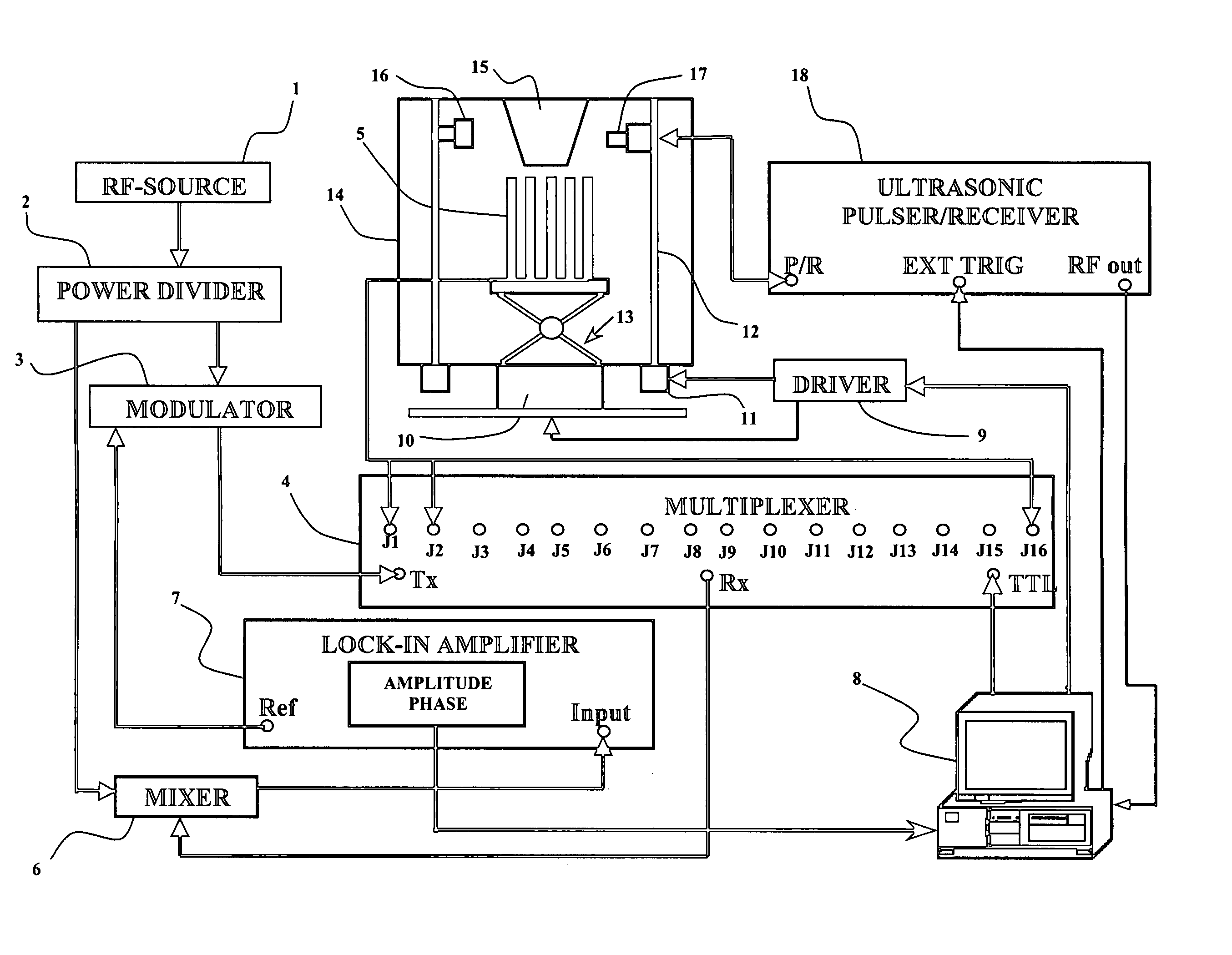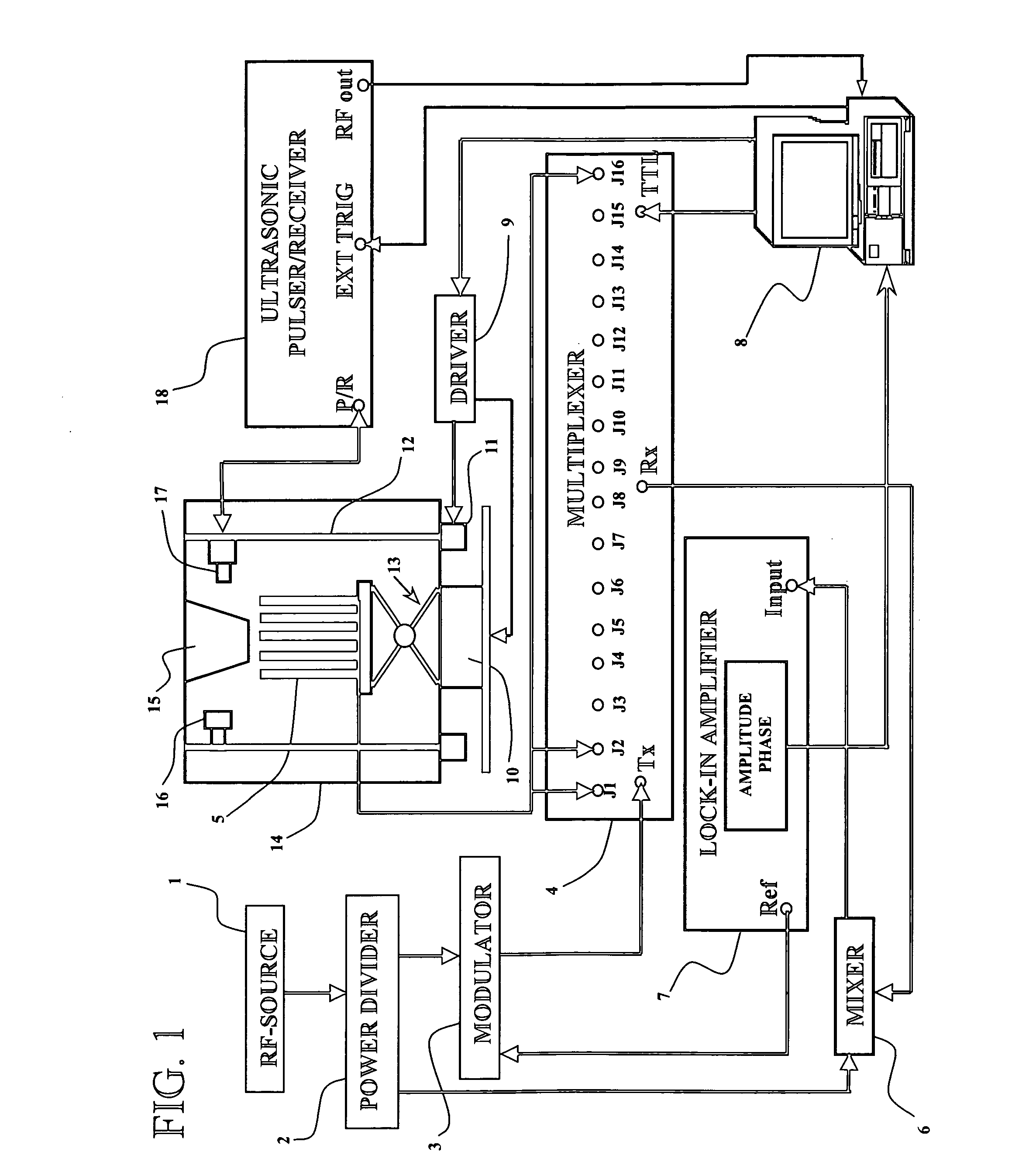Microwave imaging assisted ultrasonically
a technology of ultrasonography and microwave radiation, applied in mammography, medical science, diagnostics, etc., can solve the problems of high failure rate of mammography for women in the 25 to 40 year old age group, failure to provide qualitative images of electric properties, i.e. permittivity and conductivity of objects with high contrast, and no design generally encompasses all desired characteristics. , to achieve the effect of early detection of breast cancer
- Summary
- Abstract
- Description
- Claims
- Application Information
AI Technical Summary
Benefits of technology
Problems solved by technology
Method used
Image
Examples
Embodiment Construction
[0027] As discussed in the Summary of the Invention section, the present subject matter is particularly concerned with an improved methodology for microwave image reconstruction of primarily, but not exclusively, breast tissue for medical evaluation of the possible presence of cancer. More particularly, the present subject matter concerns the provision and use of an initial evaluation point or “guess” for a microwave investigation based on the results of an initial ultrasound investigation.
[0028] Selected combinations of aspects of the disclosed technology correspond to a plurality of different embodiments of the present invention. It should be noted that each of the exemplary embodiments presented and discussed herein should not insinuate limitations of the present subject matter. Features or steps illustrated or described as part of one embodiment may be used in combination with aspects of another embodiment to yield yet further embodiments. Additionally, certain features may be ...
PUM
 Login to View More
Login to View More Abstract
Description
Claims
Application Information
 Login to View More
Login to View More - R&D
- Intellectual Property
- Life Sciences
- Materials
- Tech Scout
- Unparalleled Data Quality
- Higher Quality Content
- 60% Fewer Hallucinations
Browse by: Latest US Patents, China's latest patents, Technical Efficacy Thesaurus, Application Domain, Technology Topic, Popular Technical Reports.
© 2025 PatSnap. All rights reserved.Legal|Privacy policy|Modern Slavery Act Transparency Statement|Sitemap|About US| Contact US: help@patsnap.com



